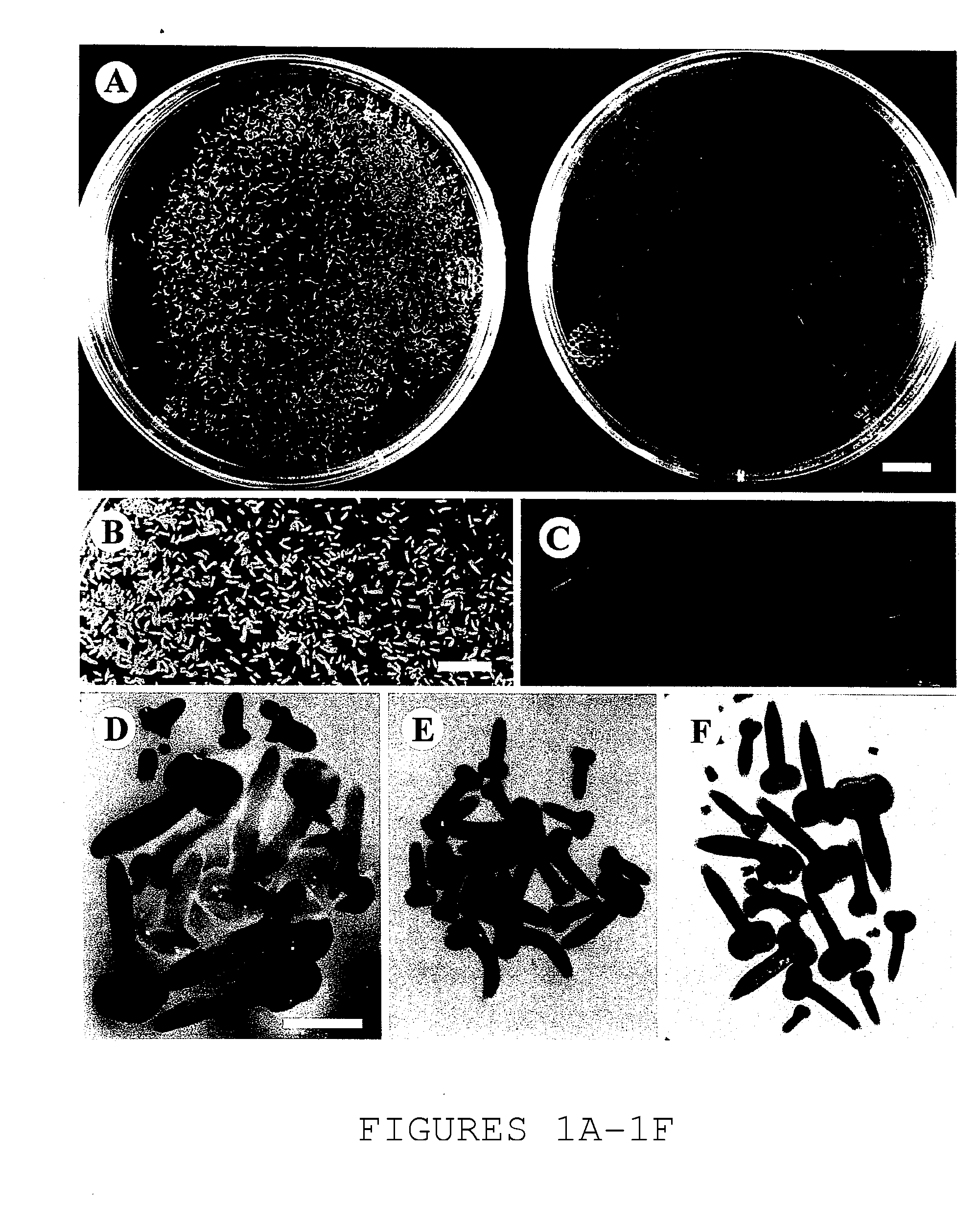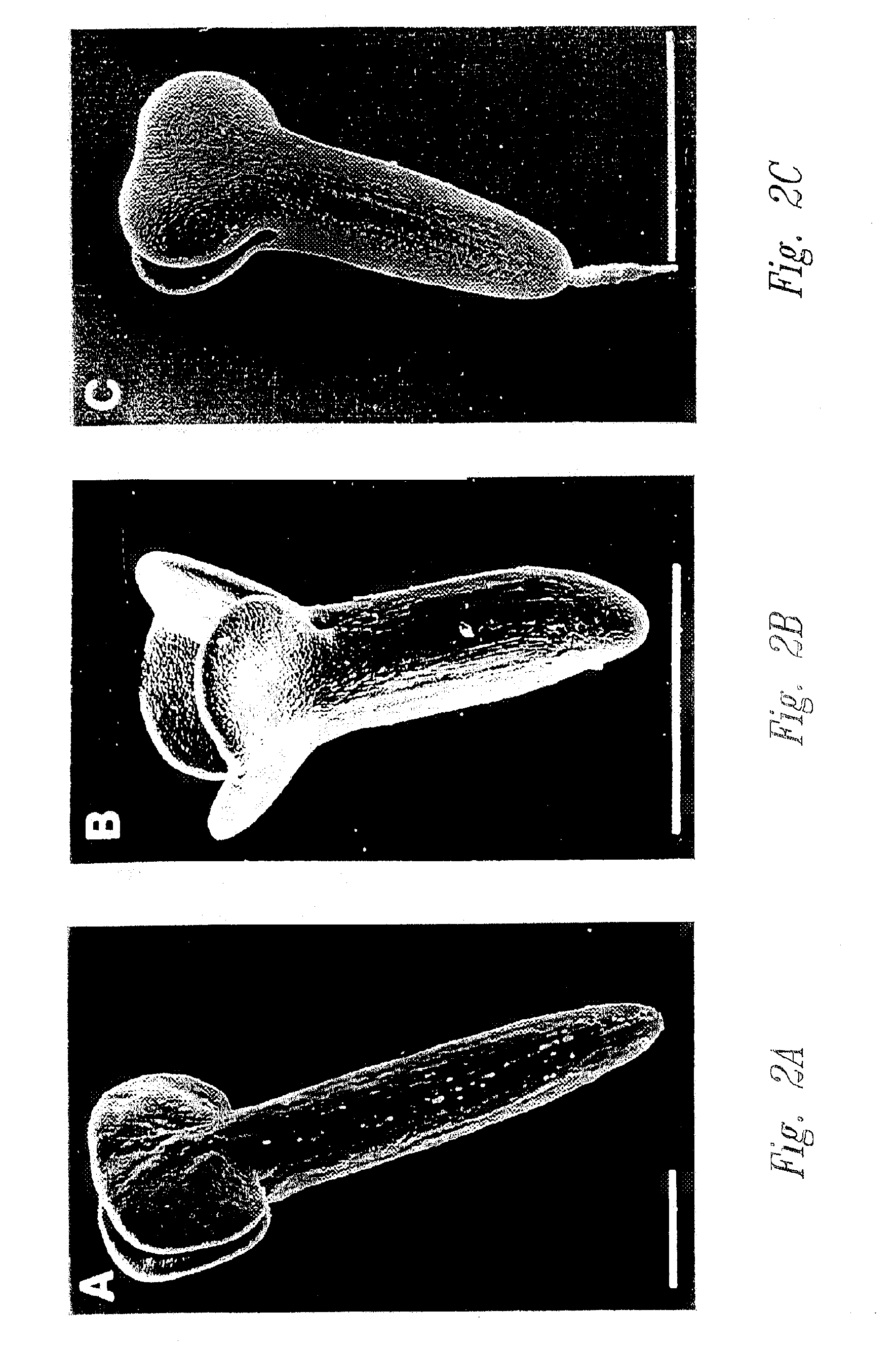Media and methods for culturing plant embryos
a technology of plant embryos and media, applied in the field of plant embryogenesis, can solve the problems of poor conversion frequency and many embryos forming abnormal plants, and achieve the effects of promoting embryo development, promoting embryo development, and minimizing toxic effects
- Summary
- Abstract
- Description
- Claims
- Application Information
AI Technical Summary
Benefits of technology
Problems solved by technology
Method used
Image
Examples
example 1
Preparation of Embryos from Brassica napus
[0042] This example illustrates the growth of donor plants, the isolation of microspores and the generation of embryos from the representative species Brassica napus.
Growth of Donor Plants
[0043] Plants of Brassica napus L. cv. Topas line 4079 were grown in a growth chamber with a 20° / 15°C. day / night temperature regime and 16 hour illumination provided by VHO (very high output) Sylvania cool white fluorescent lamps. Prior to bolting, the temperature was lowered to 10° / 5° C. (day / night) and plants were maintained at this regime providing water and nutrients twice per week with 0.35 g / L of 15-15-18 (N-P-K) nutrient solution (Ferrie and Keller, in: Gamborg and Phillips (eds) Plant Cell, Tissue and Organ Culture, Fundamental methods, pp 155-164, 1993 (Springer Verlag)). Separate sets of plants were grown at 22° / 15° C. day / night temperature regime and 16 / 8 hour photoperiod, and hand-pollinated flowers were tagged to indicate days after anthesi...
example 2
Comparative Morphological and Histological Analyses of Zygotic and Microspore-Derived Embryos
[0053] This Example illustrates the investigation of morphology of MD embryos grown on sucrose and PEG osmoticum.
[0054] Morphological characteristics of microspore- and pollen-induced embryos of Brassica napus L. cv. Topas were investigated by scanning electron microscopy (SEM). Embryos were induced from microspores at the late uninucleate stage as well as from young bicellular pollen, when subjected to the heat shock treatment—a requirement for the ‘switch’ from microspore / pollen development to embryo formation in vitro. Two different types of osmoticum were applied in liquid culture medium as described in Example 1: sucrose (13% w / v) as a permeating osmoticum and polyethylene glycol (PEG) as a non-permeating osmoticum (22-25% w / v).
[0055] Induction and subsequent development of embryos occurred on both osmotica; however, striking differences in morphology were revealed by SEM- In sucrose...
example 3
Morphological Analysis of Microspore-Derived Embryos
[0056] This example illustrates the use of scanning electron microscopy to examine morphological changes during the development of microspore-derived embryos grown using reduced levels of sucrose, in a PEG-mediated low water potential environment.
Growth of Donor Plants
[0057] Plants of Brassica napus L. cv. Topas line 4079 were grown in a growth chamber with a 20° / 15° C. day / night temperature regime and 16 hour illumination provided by VHO (very high output) Sylvania cool white fluorescent lamps. Prior to bolting, temperature was lowered to 10° / 5° C. (day / night) and plants were maintained at this regime providing water and nutrients twice per week with 0.35 g / L of 15-15-18 (N-P-K) nutrient solution (Ferrie and Keller, in: Gamborg and Phillips (eds) Plant Cell, Tissue and Organ Culture, Fundamental methods, pp 155-164, 1993 (Springer Verlag)). Separate sets of plants were grown at 22° / 15° C. day / night temperature regime and 16 / 8 ...
PUM
| Property | Measurement | Unit |
|---|---|---|
| molecular size | aaaaa | aaaaa |
| molecular size | aaaaa | aaaaa |
| length | aaaaa | aaaaa |
Abstract
Description
Claims
Application Information
 Login to View More
Login to View More - R&D
- Intellectual Property
- Life Sciences
- Materials
- Tech Scout
- Unparalleled Data Quality
- Higher Quality Content
- 60% Fewer Hallucinations
Browse by: Latest US Patents, China's latest patents, Technical Efficacy Thesaurus, Application Domain, Technology Topic, Popular Technical Reports.
© 2025 PatSnap. All rights reserved.Legal|Privacy policy|Modern Slavery Act Transparency Statement|Sitemap|About US| Contact US: help@patsnap.com



